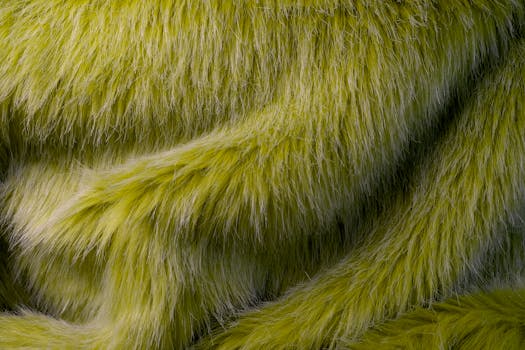
Eco-Friendly Fibers: How African Companies are Leading the Green Textile Movement
The textile industry has long been criticized for its environmental impact, from the use of toxic chemicals and dyes to the massive amounts of waste generated by fast fashion. However, a new movement is emerging, driven by African companies that are pioneering the use of eco-friendly fibers and sustainable production methods. In this article, we will explore the green textile movement and how African companies are leading the way.
Introduction to Eco-Friendly Fibers
Eco-friendly fibers are made from natural or recycled materials that have a lower environmental impact than traditional fibers. These fibers include organic cotton, hemp, bamboo, and recycled polyester, among others. African companies are increasingly turning to these fibers as a way to reduce their environmental footprint and appeal to consumers who are becoming increasingly conscious of the impact of their purchasing decisions.
One of the key drivers of the green textile movement in Africa is the growing demand for sustainable fashion. Consumers are no longer content to buy cheap, trendy clothing that is made from environmentally damaging materials. Instead, they are seeking out brands that prioritize sustainability and transparency. African companies are responding to this demand by investing in eco-friendly fibers and production methods.
African Companies Leading the Way
Several African companies are at the forefront of the green textile movement. For example, the South African company, Seas of Change, is using recycled plastic waste to create sustainable clothing. The company collects plastic waste from the ocean and recycles it into polyester fibers, which are then used to make clothing. This innovative approach not only reduces waste but also helps to clean up the ocean.
Another company, Kitawa, based in Kenya, is using organic cotton and natural dyes to create sustainable clothing. The company works with local farmers to source its cotton and uses traditional dyeing methods to create unique and colorful fabrics. Kitawa’s approach not only reduces the environmental impact of its clothing but also supports local communities and preserves traditional craftsmanship.
In Nigeria, the company Adire is using a combination of traditional and modern techniques to create sustainable textiles. The company uses natural dyes and hand-printing methods to create unique and colorful fabrics. Adire’s approach not only reduces the environmental impact of its textiles but also preserves traditional Nigerian craftsmanship and supports local communities.
Challenges and Opportunities
While the green textile movement in Africa is gaining momentum, there are still several challenges that need to be addressed. One of the main challenges is the lack of infrastructure and resources to support sustainable production methods. Many African companies struggle to access the financing and technology needed to invest in eco-friendly fibers and production methods.
Another challenge is the competition from cheap, imported textiles. Many African countries have a significant trade deficit in textiles, with cheap imports from countries such as China and India flooding the market. This makes it difficult for African companies to compete, especially when it comes to pricing.
Despite these challenges, there are also many opportunities for African companies to drive the green textile movement. One of the main opportunities is the growing demand for sustainable fashion. As consumers become increasingly conscious of the environmental impact of their purchasing decisions, there is a growing market for sustainable textiles.
Another opportunity is the potential for African companies to differentiate themselves from international competitors. By prioritizing sustainability and transparency, African companies can build a unique brand identity and appeal to consumers who are looking for ethical and environmentally responsible fashion.
Conclusion
In conclusion, African companies are pioneering the use of eco-friendly fibers and sustainable production methods, driving the green textile movement and transforming the fashion industry. While there are still several challenges that need to be addressed, there are also many opportunities for African companies to drive this movement and capitalize on the growing demand for sustainable fashion. As the textile industry continues to evolve, it is likely that we will see more African companies emerging as leaders in the green textile movement.





